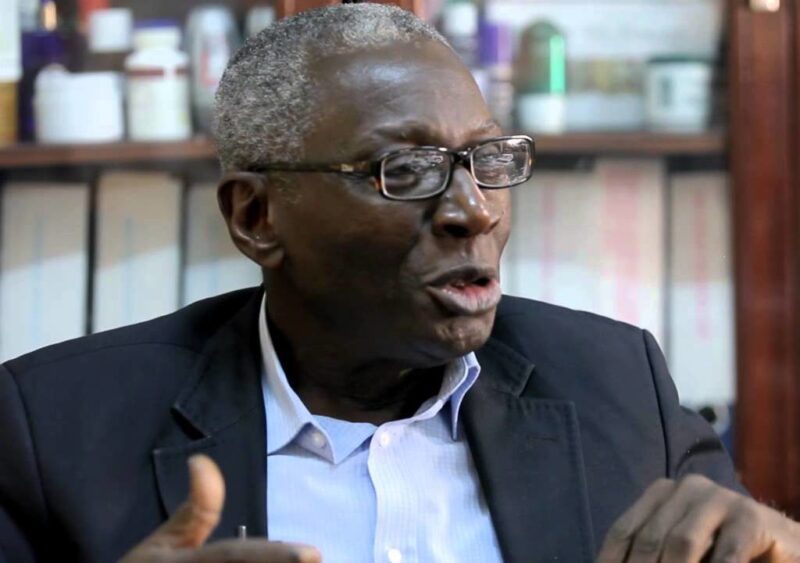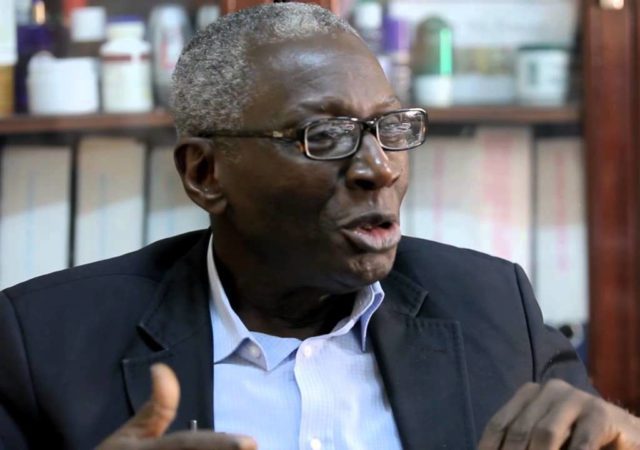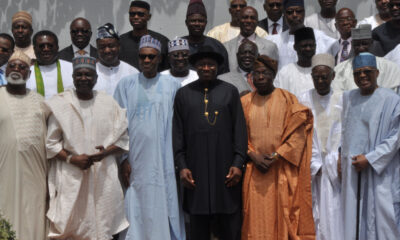Economic Issues
Redesign, Redenomination Or Revaluation Of The Naira? -By Henry Boyo

The primary reason for the public’s rejection of lower naira denominations was identified, in this column, in the last fortnight, as their negligible purchasing values, rather than the material of fabrication. Indeed, both hard wearing, longer lasting coins, and the latest polymer notes adopted for fabrication of lower naira denominations, which the Central Bank of Nigeria released in April 2019, against better judgment, will fail the test of public acceptance, because of their grossly eroded purchasing values. Consequently, the plan for mere redesign of N5, N10, N20, and N50 denominations in polymer or any other material, is clearly misguided and wasteful as the public rejection of these denominations will be same as primary kobo coins!
Notably, however, redenomination of the existing naira profile, with two or three decimal points will consolidate purchasing power and encourage popular acceptance of the same primary coins of 1Kobo, 5Kobo, 10Kobo, 20Kobo, 50Kobo and one naira respectively.
Instructively, nonetheless, if the monetary strategy failure that instigated rejection of lower naira denominations persists, any redenominated naira profile will predictably, gradually, also lose value over time, and ultimately become rejected for settlements because of their grossly eroded values. Thus, neither redesign nor redenomination will sustain acceptance of lower denominations overtime. However, a market determined exchange rate will raise the purchasing power of all naira denominations and make even primary kobo coins readily acceptable. The above title on the need for market determined currency revaluation was first published in August 2013. It is reproduced here for effect. Please read on.

“In a recent interactive session with the House Committee on Banking and Currency, the CBN Governor, Lamido Sanusi, noted that if the plan he proposed to redesign naira notes, last year, was executed, “it would have made it impossible for counterfeiters to cook”. He further noted that the best practice currency management is that “within a period of five to eight years, you redesign the currency, after which counterfeiters tend to catch up with you”. However, in apparent contradiction, Sanusi, himself, also readily admits that “In terms of what we see as counterfeit in the processing of naira notes, the percentage is very low!”
In reality, the issues of unwieldy portability, the acrimony associated with shortage of change for small transactions, the inflationary stimulus in product pricing, rapid deterioration of both paper and polymer notes because of high turnover rates and ultimately the reduction in naira purchasing value, from depreciation and double-digit annual inflation rates, are all equally significant challenges to sustaining an acceptable currency profile. Consequently, it will be self-delusion to expect that a mere redesign or fabrication of naira denominations in whatever material would counter or remediate these weaknesses!
Indeed, some analysts have suggested that redenomination/decimalisation would make the naira more portable, to also accommodate primary kobo coins, for change in small transactions, and restrain inflation by making competitive pricing of consumer products more practical.
Instructively, redenomination is the simple process of changing the nominal value of a currency by moving the decimal point. For example, if the naira is restructured by two decimal points, N1,000, which is the highest in our currency profile, will be replaced by a N10 denomination. Similarly, the existing N100 note will become N1, while a new N1 denomination can be fabricated as a coin, and still have the same purchasing value as the old N100 note. Furthermore, N50 would become a 50Kobo coin, while N10 will become 10Kobo coin, and the old N1 will become 1Kobo. Incidentally, Sanusi’s proposed N5000 note would become just N50.
Thus, a redenominated currency profile would increase the purchasing power of coin denominations and still make them portable and attractive for transactions and accepted, also, for provision of change. Furthermore, consumer products can become more competitively priced in 1Kobo steps, rather than the unusually wide leap of N5 or more, as with pure water sachets, for example.
The advantages of redenomination may however, be short-lived, if the abiding economic instigators of inflation are not adequately tackled. For example, the Ghanaian currency, the Cedi, was redenominated in 2006-7, by four decimal points, so that ¢10,000, became just one new Ghana cedi and exchanged for almost US$1.2. However, since the root cause of Ghana’s average over 15 per cent annual inflation rate, remained unresolved, the cedi has since crashed after five years by over 50 per cent, to Gh¢1.8=US$1.
Consequently, it is clear that neither currency redesign nor redenomination will completely satisfy the preferred qualities of portability, safe store of value and acceptability as a medium of exchange.
Notably, this writer has consistently maintained that value is the major challenge to a coherent currency profile. For example, a much stronger naira value, just like with redenomination, would make primary kobo coins more valuable. However, if the root causes of our economy’s double-digit annual inflation rates and weak exchange rates remain unresolved, the purchasing power of the redenominated naira would be rapidly eroded, as is the case with the Ghana Cedi!
Some analysts have argued that the naira value cannot be enhanced or improved until we diversified our economy and produced more to earn additional export revenue. Instructively, however, a diversified economy can never evolve without liberal access to cheap funds to the real sector, at rates not exceeding five to six per cent, while the naira exchange rate must also become stronger, so that critical imported industrial raw material costs will fall.
Regrettably, such a benign enabling climate for competitive export of processed goods and diversification will never be possible, if Nigeria’s economy remains besieged by the seemingly unyielding threat of excess naira supply, which ultimately, according to Sanusi, predicates the crazy reality of government borrowing back its own funds at 13-14 per cent, so that the real sector becomes forced to borrow at over 20 per cent, with inflation largely untamed.
Arguably, the creation or substitution of humongous naira sums as replacement for monthly statutory allocations of dollar-denominated revenue, undoubtedly, creates the constant burden of surplus cash, (which must be contained from use to restrain inflation), and which also results in a conscious manipulation of the balance of demand and supply of the naira in favour of the dollar rate. Meanwhile, the paradox of a sliding naira rate, despite increasing reserves, ultimately, makes our currency less desirable to hold as a safe store of value.
Paradoxically, the naira steadily depreciated, even when Nigeria’s dollar reserves climbed consistently from less than $4bn in 1996 to over $50bn in 2007! Thus, a positive realignment of naira/dollar exchange rate with the open market forces of demand and supply, at play, will be to issue negotiable dollar certificates for monthly allocations of dollar-denominated revenue, rather than to unilaterally fix exchange rates which create bloated naira sums as replacement, to further fuel the inflation tendency of surplus/excess naira supply. The resultant market imbalance of more dollar certificates/value chasing less bloated naira balances with such a payment system will strengthen the naira rate to make the naira the currency of choice.
In reality, there is no credible explanation why naira exchanged for N80=$1 between 1996 and 1998, under military dictatorship, when Nigeria, reportedly, had only $4bn which served as four months imports demand forex cover, while inexplicably, the naira currently exchanges for N160=$1, despite over 12 months surplus imports forex demand cover in excess of $50bn! Ultimately, a much stronger naira will also engender a currency profile that will make primary Kobo coins more valuable and acceptable for transactions.
In conclusion, therefore, a reformed naira/dollar price mechanism will induce a currency profile with, stronger lower denominations that will remain a stable and portable store of value, which will be readily accepted, for change in transactions and as a medium of exchange. Notably, neither currency redesign nor redenomination can sustain the purchasing power and stability of any currency’s profile against those heavy inflationary headwinds aggressively driven by systemic ‘curse’ of excess naira supply and unbridled currency depreciation.”



















